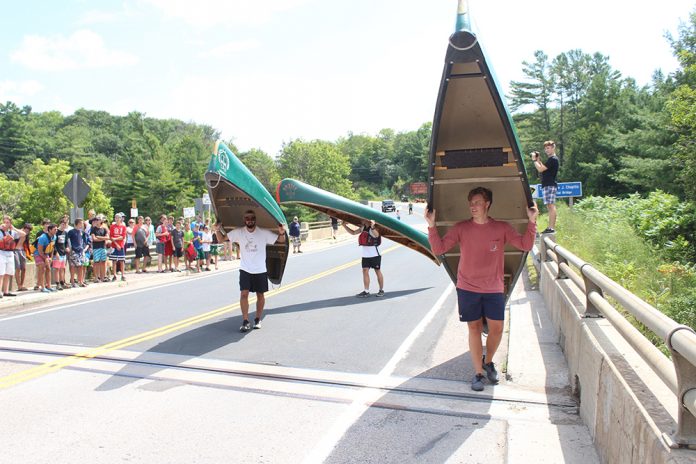I went to HIFF Saturday night to see the screening of Brotherhood. All up, around 350 people saw the movie over the course of the weekend. For those unfamiliar with the film, it’s a bit of a coming of age tale about young men during a tragic mass drowning on Balsam Lake.
It was set in 1926, eight years after the end of the First World War. Many of the young men in the film had lost their fathers to the war that was supposed to end all wars.
Only three of the boys survived, to live to see the start of the Second World War in 1939, a campaign that stretched until 1945.
I found the timing of the film to be serendipitous considering we will be honouring war veterans at Remembrance Day ceremonies across the region this coming Monday.
One of the film’s young actors attended the screening and spoke to the audience Saturday night. Sam Ashe Arnold is a 16-year-old from Ottawa. When asked by a member of the crowd for a status on his acting career, Ashe Arnold said he’d be working on a film in the spring about Kent State. He said it as if no one in the seats knew about Kent State.
Of course, HIFF audiences, like many in Haliburton County, are populated by a generation that would know Kent State.
The last film of any significance on this incident was released in 1981, long before Ashe Arnold was born in 2003.
The movie is based on the true story of the student protests at Kent State University in Ohio. This film focused on the four students who were killed when the National Guard attempted to quell the riots that began on May 4, 1970, after President Richard Nixon announced that American troops would begin bombing the heretofore neutral country of Cambodia.
Many of us know Neil Young’s famous song, Four Dead in Ohio, based on the events.
It behooves those of us who were alive for these events: whether it be a connection to the First or Second World Wars, Korea, Vietnam, Afghanistan, or conflicts elsewhere, to ensure the Sam Ashe Arnold’s of the world know the history of armed conflict across the globe – and more importantly how they impacted Canada and Canadians.
That is why every year The Highlander searches for a fresh story or two to mark Remembrance Day.
In today’s edition we feature two such stories. One is about the Haliburton Legion acquiring gifted tulip bulbs from the Netherlands. They have planted those bulbs near the Cenotaph is hopes of a colourful spring bloom in 2020 – the 75th anniversary of the end of the Second World War.
The other story is about 96-year-old war veteran Mabel Brannigan from Minden. She is writing a series of stories about local war veterans from the 1939-1945 campaign to honour them next year.
On Nov. 11 there will be services in Haliburton, Minden and Wilberforce as usual. We urge all County residents to attend these commemorations. In Haliburton, the service is held at the Cenotaph; in Minden, at the Village Green Cenotaph and in Wilberforce at the Wilberforce Legion Branch 624.
We must remember them.










